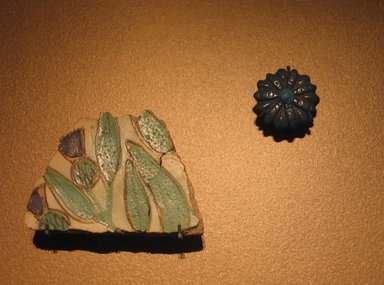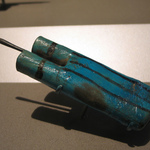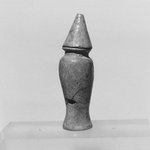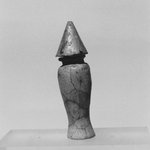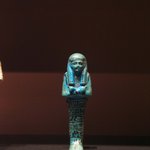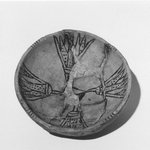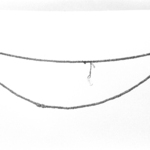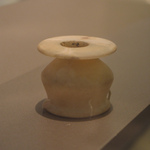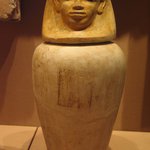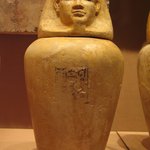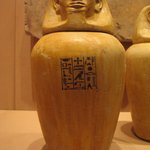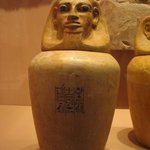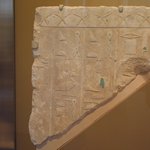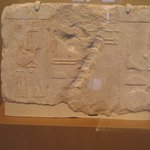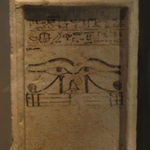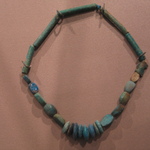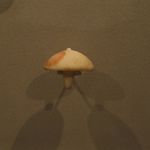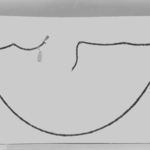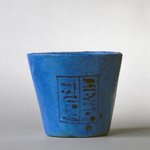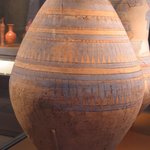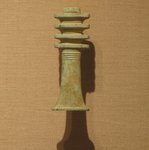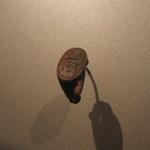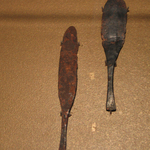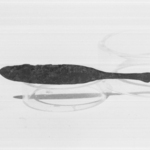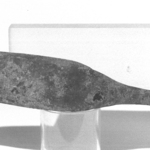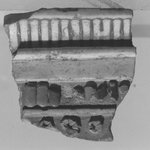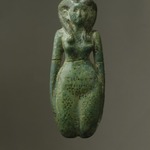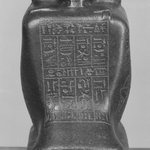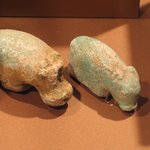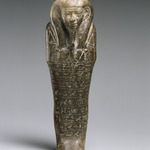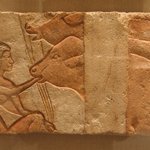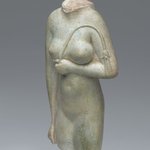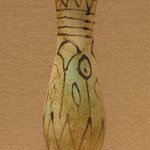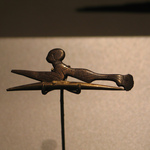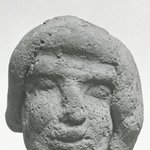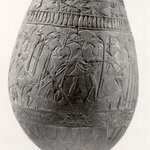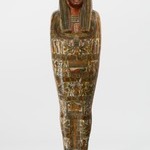Floral Inlay
Egyptian, Classical, Ancient Near Eastern Art
On View: Egyptian Orientation Gallery, 3rd Floor
Inlays
The late Eighteenth Dynasty taste for opulence extended to inlaid wall decoration in temples, palaces, and large houses.
During the reign of Akhenaten, skilled workmen began to create scenes by piecing together individual fragments of colored glass or faience. These works depicted the king, natural motifs, and faithful worshipers beneath the Aten sundisk. Many of these motifs had already appeared in paintings in earlier buildings, but the new medium added vividness and prominence. Architectural inlay continued into the Twentieth Dynasty.
MEDIUM
Faience
DATES
ca. 1353–1329 B.C.E.
DYNASTY
Dynasty 18
PERIOD
New Kingdom, Amarna Period
ACCESSION NUMBER
16.345
CREDIT LINE
Gift of Evangeline Wilbour Blashfield, Theodora Wilbour, and Victor Wilbour honoring the wishes of their mother, Charlotte Beebe Wilbour, as a memorial to their father, Charles Edwin Wilbour
PROVENANCE
Tell el-Amarna, Egypt; January 22, 1891, purchased in el-Hagg Qandil, Egypt by Charles Edwin Wilbour; 1896, inherited from Charles Edwin Wilbour by Charlotte Beebe Wilbour; 1914, inherited from Charlotte Beebe Wilbour by Evangeline Wilbour Blashfield, Theodora Wilbour, and Victor Wilbour; 1916, gift of Evangeline Wilbour Blashfield, Theodora Wilbour, and Victor Wilbour to the Brooklyn Museum.
Provenance FAQ
CATALOGUE DESCRIPTION
Conventionalized blue faience flower. Apparently a daisy with dark blue petals and light blue center. Light green stem on under side. Use of object not clear but probably an inlay.
Condition: Perfect.
CAPTION
Egyptian. Floral Inlay, ca. 1353–1329 B.C.E. Faience, Diam. 1 1/8 in. (2.8 cm). Brooklyn Museum, Gift of Evangeline Wilbour Blashfield, Theodora Wilbour, and Victor Wilbour honoring the wishes of their mother, Charlotte Beebe Wilbour, as a memorial to their father, Charles Edwin Wilbour, 16.345. Creative Commons-BY (Photo: , CUR.16.345_37.411_erg456.jpg)
IMAGE
group,
CUR.16.345_37.411_erg456.jpg.
"CUR" at the beginning of an image file name means that the image was created by a curatorial staff member. These study images may be digital point-and-shoot photographs, when we don\'t yet have high-quality studio photography, or they may be scans of older negatives, slides, or photographic prints, providing historical documentation of the object.
RIGHTS STATEMENT
Creative Commons-BY
You may download and use Brooklyn Museum images of this three-dimensional work in accordance with a
Creative Commons license. Fair use, as understood under the United States Copyright Act, may also apply.
Please include caption information from this page and credit the Brooklyn Museum. If you need a high resolution file, please fill out our online
application form (charges apply).
For further information about copyright, we recommend resources at the
United States Library of Congress,
Cornell University,
Copyright and Cultural Institutions: Guidelines for U.S. Libraries, Archives, and Museums, and
Copyright Watch.
For more information about the Museum's rights project, including how rights types are assigned, please see our
blog posts on copyright.
If you have any information regarding this work and rights to it, please contact
copyright@brooklynmuseum.org.
RECORD COMPLETENESS
Not every record you will find here is complete. More information is available for some works than for others, and some entries have been updated more recently. Records are frequently reviewed and revised, and
we welcome any additional information you might have.
